InterviewsDesigning For The Destination
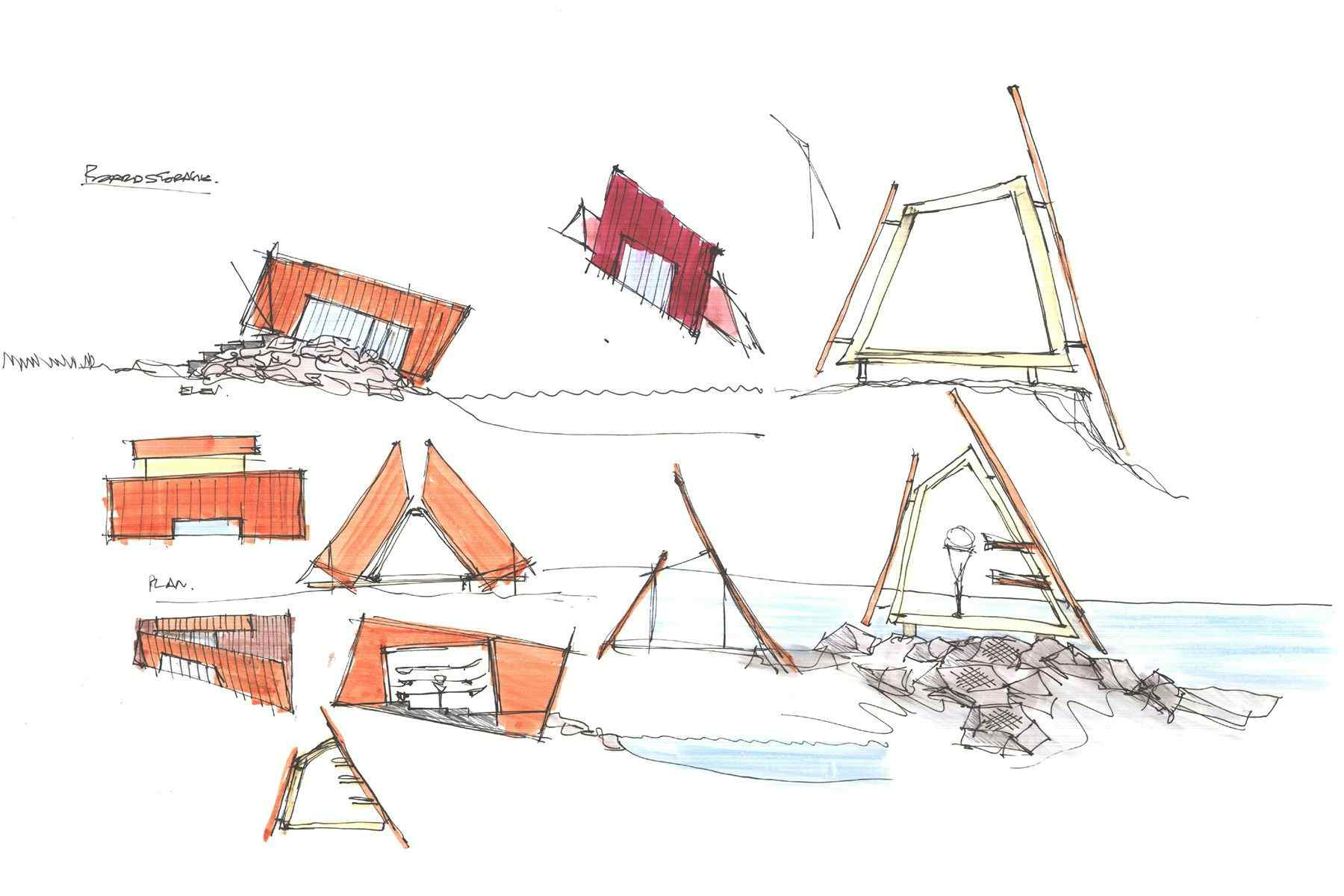
Architect John Fache & The Surfing Hollow Days Project
In an interview with Indoek back in 2017, when asked about the most rewarding/redemptive part of surfing, writer and former pro surfer, Jamie Brisick, said: “I don’t like surfing, I like having surfed. The afterglow is the most rewarding and redemptive part of surfing.” This thought stuck with me: partly because I had never given much heed to “the afterglow of surfing”, partly because it throws down the gauntlet on the romantic it’s-about-the-journey-not-the-destination trend that seems to have seeped into so many spheres of our lives — including surf culture. Indeed, there’s a lot of talk about what we do and how we feel when we’re surfing. Not so much about what we do or feel before. Or about what we do or feel after.
So it was refreshing to stumble upon Canadian Architectural Designer John Fache’s thesis and contemplate post-surfing practices and possibilities. Essentially, John added a heaped spoon of bathhouse culture, mixed it with the specific rituals and hardships of cold-water surfing and spiced it all up with scientific data on the benefits of nature immersion and flow state for creativity and well-being. The concoction fermented into a model of a surf ranch that architecturally considers the different stages involved in the practice of surfing — not wave riding alone — so that the experience can be enhanced and the positive effects extended.
“This project will look to find form and spacial significance in a subculture traditionally removed from the architectural narrative [...] I am interested in exploring the design practices that can help the individual decelerate from this flow state, allowing for an elongated benefit from surfing. Exploring both the physiological as well psychological benefits of both surfing and the human body in nature. Small architectural moments with large benefits could help individuals become healthier, happier and more creative.”
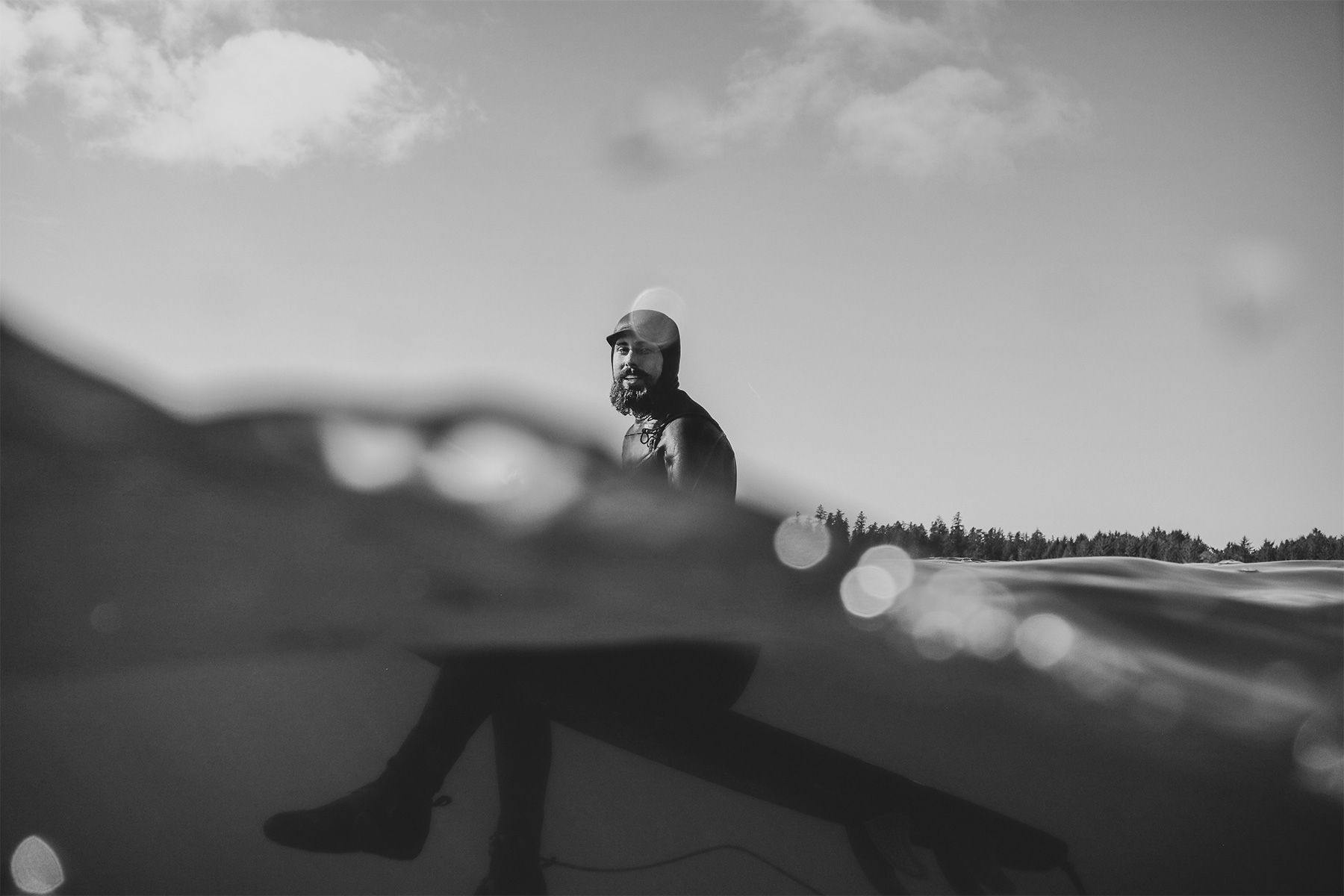
Surf Simply caught up with John to learn more about the project and his views on the intersection between architecture and surfing. Readers are encouraged to read John’s thesis both to get a bit more context of the project and access his philosophical reflections further.
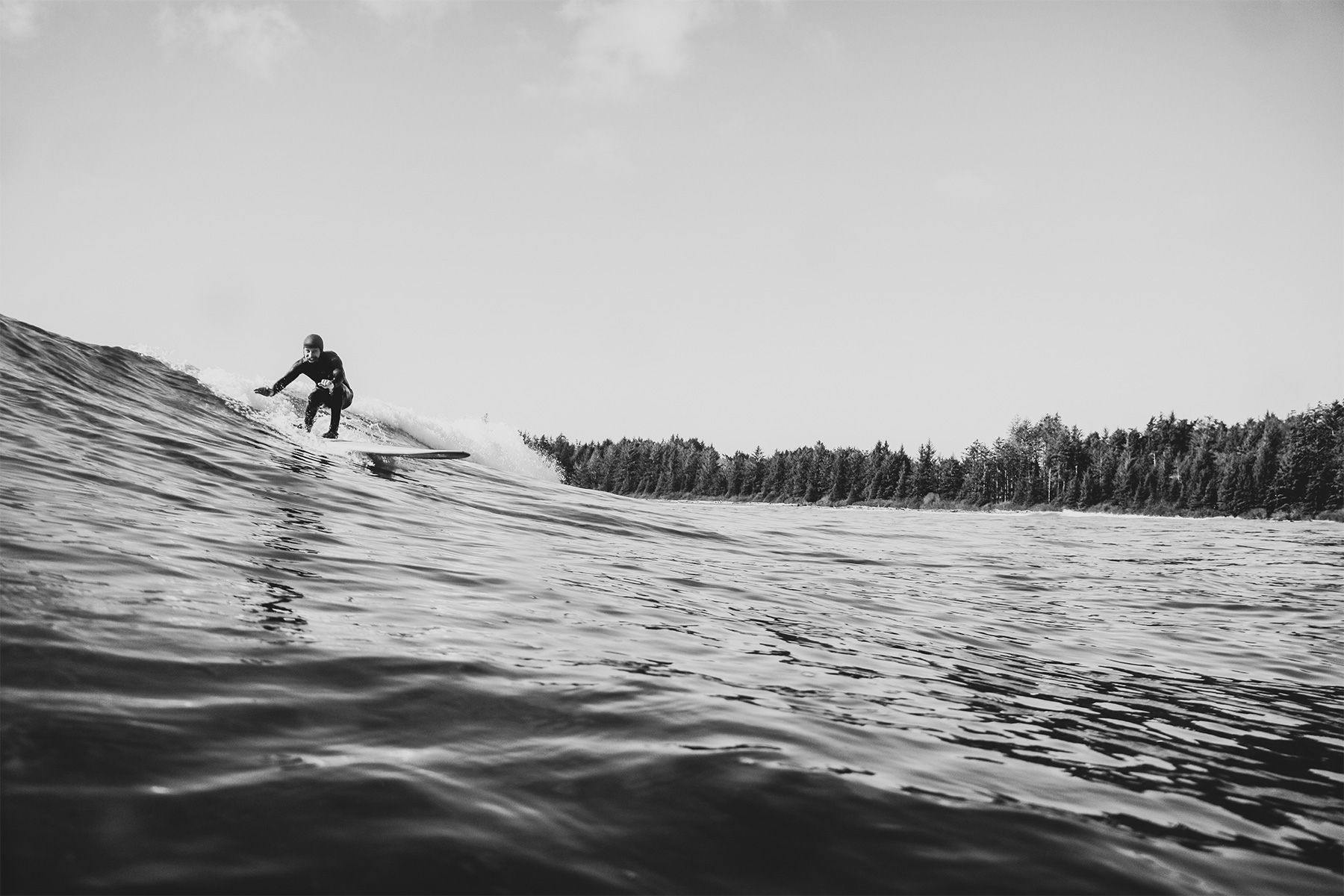
Could you please start by telling us a bit about your background in design/architecture and where the idea for this thesis came from?
I come from a furniture design background, and have always been interested in the smaller scale of architecture. Working in a woodshop for the better part of 10 years has helped me appreciate the details both in furniture and now architecture. Surfing had been a part of my life since I was younger, but when I met my now wife, Bronwyn, her roots in San Diego solidified it as a priority in both our lives. We found common ground in the water, whether it is cold or warm.
I feel that as I entered into the ideation stage of my thesis, I wanted to combine my extracurricular passion with my current field of studies. I grappled with the idea that this may be too light of a topic while colleagues try to tackle the next big global issue. It was on a surf trip when I noticed how a singular moment in cold water surfing really defines the whole experience: the moment trying to get out of your wetsuit. It is jarring and instantly removes you from your previously achieved mental state. I thought to myself, “Could I focus on just that one moment? Was there enough there to explore?” I thought about how architecture might help ease that experience, to allow the surfer to maintain their mental state coming out of the water. It was a really fun approach, using a macro lens initially, and then allowing your programme to build around that moment.
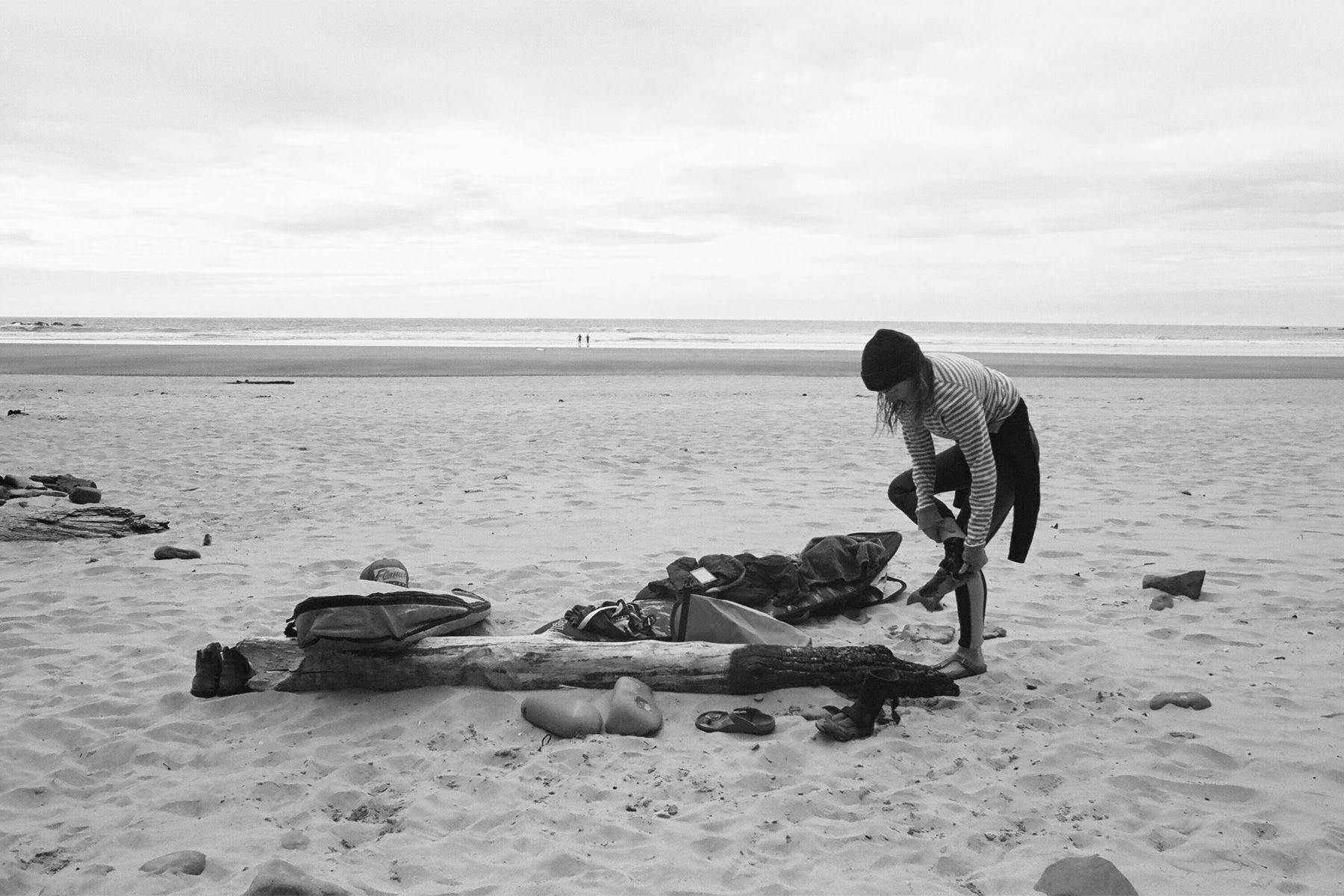
The thesis juxtaposes surfing and bath culture; you use models of bathhouses as inspiration for your own proposed surf ranch model and even add a bathhouse to the blueprint. On that, you write: “The exploration of water and the act of bathing as well as the transition between wet and dry are key to my own research for my project.” As someone who’s researched bath culture, could you please give us a summary of just how entwined these two cultures are? And what were some of the most intriguing things you discovered about bath culture?
When I dove into these subcultures, I found that the most compelling similarities came in the form of thermal delight, a term coined by Lisa Heschong. It’s the idea that humans actually benefit from thermal irregularity. I feel that the most intriguing discovery I had was just how crucial the resting stage of the sauna cycle is. I knew the dry heat of the cedar-clad rooms often took front stage, followed closely by the visceral dive into cold water or a fresh snow pile; however, it is the time spent after that that allows the body to react to these vast changes in temperature. This stage is often skipped, but is likely the most important. I found it fascinating that the simple act of resting, bringing the body back to a normal temperature was critical. It's poetic in a sense.
Speaking of this juxtaposition… One sentence from the Ritual section of Chapter I caught my attention: “There is an ingrained ritual to bathing. Whether acknowledged at the moment or not, these small gestures lead to ritual. Architecture can help inform these rituals through the sequencing of spatial conditions.” And you later add: “The act of surfing is ritualistic in its essence. A daily practice, filled with semi-spiritual customs.” I was wondering if you could elaborate on and/or exemplify how architecture can inform rituals such as surfing, and how ritualistic practices such as surfing influence architecture.
I approached this thesis very hesitantly, wanting to make sure that architecture wouldn't ruin surfing. It is such a fine balance of being too perfect, or too seamless that takes away from the very nature of surfing. I found and will continue to explore how small moments can make a big difference. The small board storage I designed right down by the shore might best exemplify this: never intended to take away from the experience, rather its design allows the surfer to stay out in the water longer, potentially elongated in the mental benefits surfing provides.
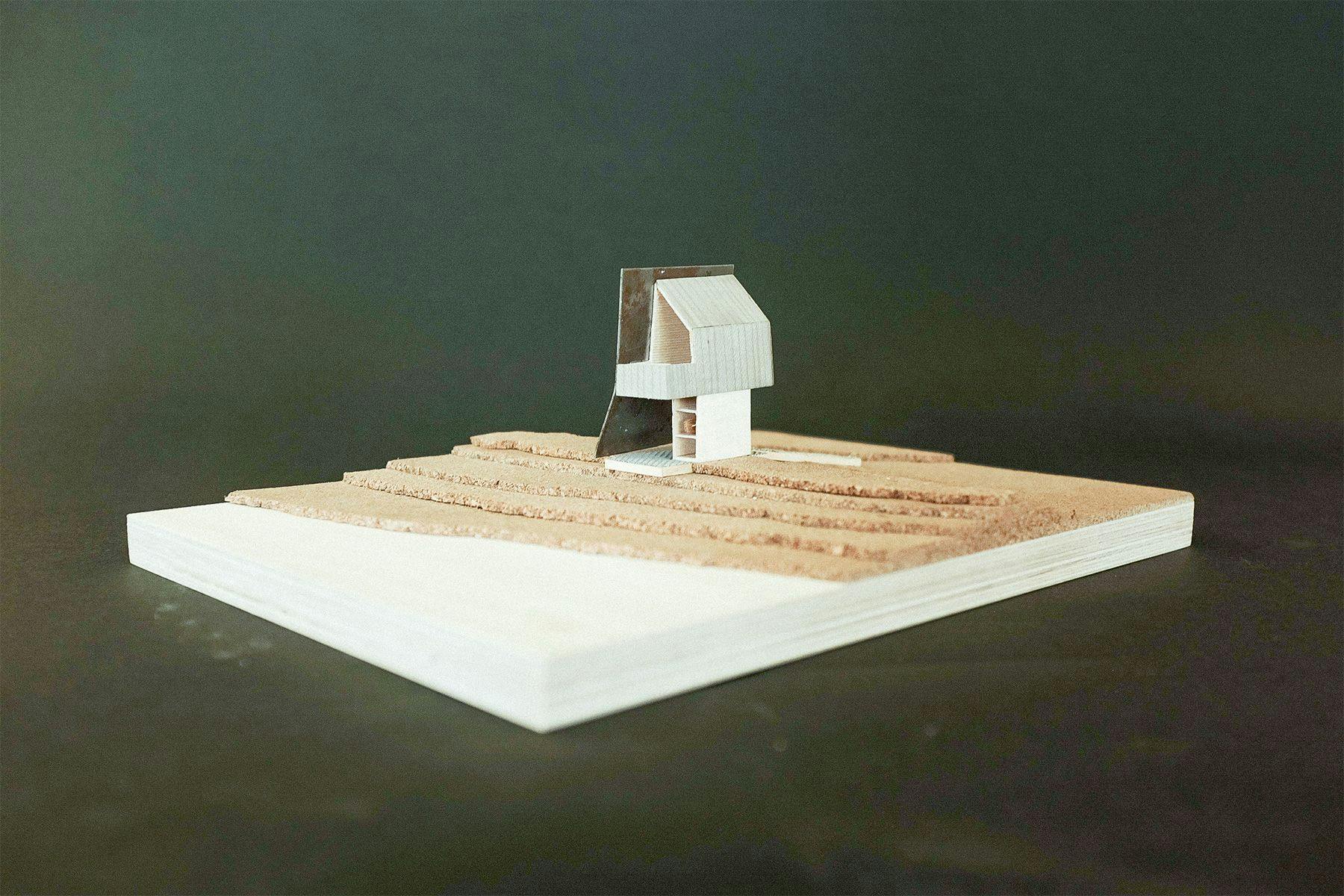
It consisted of a viewing platform. Unsure of conditions, both surfers and watchers climb up the playful ladder to the viewing platform that allows a better vantage point of the swell. This space is for shelter, not luxury, and helps in the decision-making of whether to paddle out or stay in for another coffee. Next, a windbreak reaches out onto the beach, guiding the exhausted surfer to safety, a beacon of familiarity in a windswept landscape. It helps give a momentary reprieve from the prevailing south-westerlies, just enough to stave off the cold a little longer. A surfboard storage, simply positioned to allow an effortless placement of your board, when your arms are exhausted and your fingers frozen and finally, a boardwalk. Smooth and familiar under your feet, it becomes a break from the sharp coastal granite under frozen toes. This predictability lets your brain maintain the flow state, not preoccupied with the unpredictability of the rugged coastal terrain.
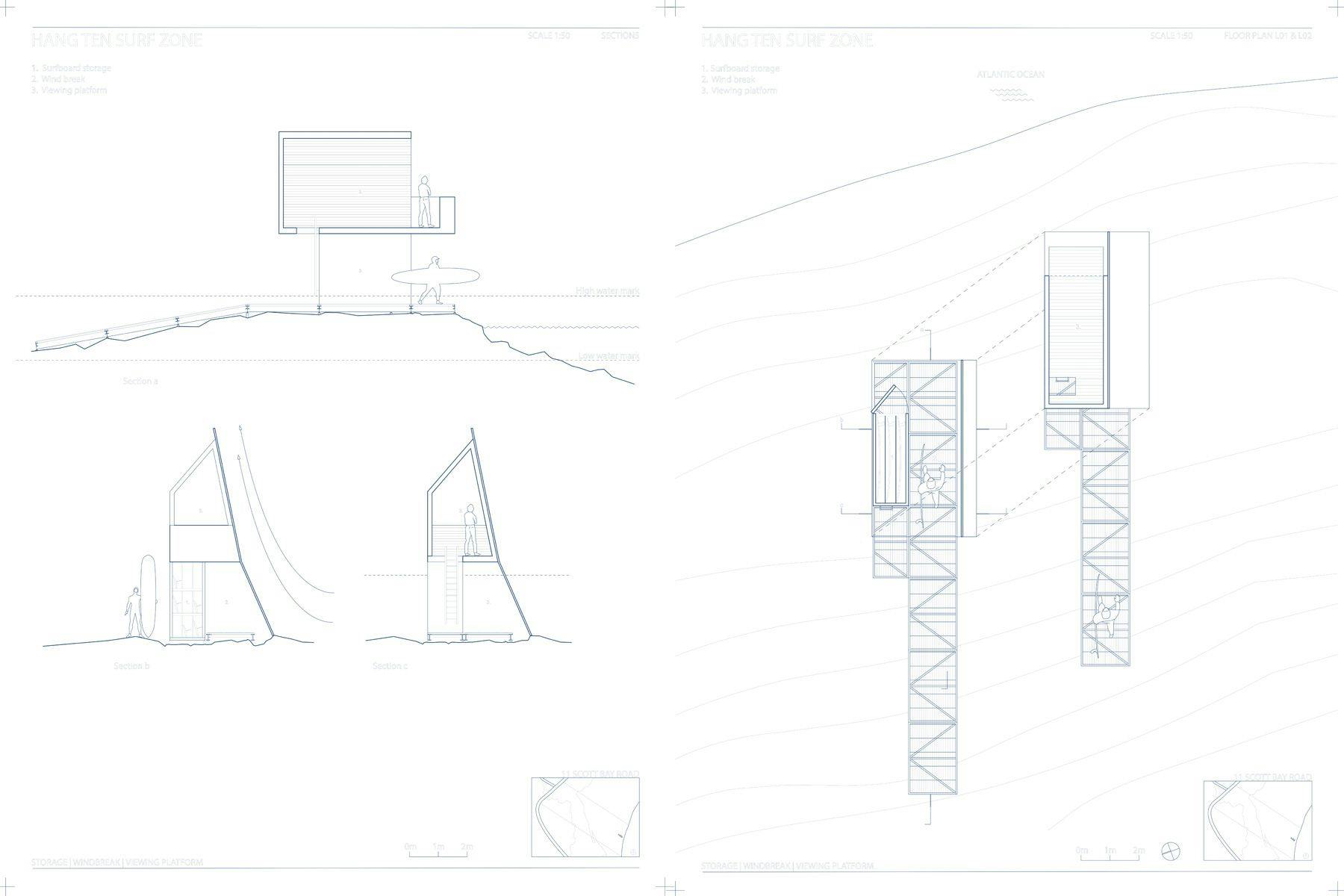
In each one of these spaces, rituals all too familiar with surfers are expressed: the surf check where anticipation is high and hands point eagerly at rising peaks; the post-surf “catch your breath and laugh with friends while you contemplate if you should somehow go out for just one more spot”, where really all you need is a place to sit, put your board somewhere where it won't get dinged and rest out of the wind. These are examples of where small architectural moments could be used to help enhance the experience for the surfer — rather than remove the surfer from the true experience.
The second section of Chapter I deals with the idea of Contrast in architecture. On this, you write: “Atmospheric homogeneity seems to be the goal within the architectural world currently. Wrapped up in sustainability, we disregard contrast in experience as a failure in the design. Extremes in temperature [are] warded off as the worst case scenario.” With that in mind, and considering you’re based in British Columbia, Canada, how would you say surfing in cold water — and cold environments surrounded by pine trees instead of palm trees — influences our wave riding experience, both tangible and intangible? And how would you compare the experience of surfing in a tropical setting with that home, both in terms of surfing and architectural design perception?
There is something undeniably romantic about the individual who is willing to push past all the barriers of the rugged coastlines of Canada and attempt to ride the cold peaks that crash here. It is in that struggle that I hear most people talk about why cold water is so great. It makes those waves feel just that little bit better. The beer tastes crisper and the stories shared around the table often involve outlandish conditions or forest trails with mandatory bushwacking. I think it keeps you on your toes in a sense, the winter brings the best swell, but the harshest conditions, while the summer brings the potential of a suntan and rolling knee-high peelers. These ever-changing conditions allow you to continually grow both as a surfer and inadvertently as an individual as well.
I have had the privilege of surfing in warm water quite a bit, and believe me, not struggling with a 5/4 before paddling out is glorious. At the end of the day, the feeling of riding down a wave is universal, how we get out there is often so personal, and the act of just getting out there is truly the most important part. In some places you zinc your nose, in other places you vaseline it.
In the final section of Chapter I, you talk about Transitions, highlighting that “[t]he transition between wetsuit and clothes has a long tradition of the body contorting into inhuman positions, making the least religious, praying to a higher power for the sweet release of the arm or leg,” and that “[t]his cumbersome act is part of the transition from dry to wet, warm to cold, it marks a moment in the procession. If we can architecturally intervene in this moment, we have the opportunity to allow the body to be vulnerable during this transition.” Can you please explain how this architectural intervention would work in your surf ranch project? And what’s the benefit of introducing vulnerability during the transition stage?
I feel growing up in North America, we have a very closed approach to the human body when it comes to being naked in front of strangers. While visiting various cultures around the world, I have found it is not the case everywhere. Learning from the Onsens in Japan where being naked while bathing is not optional, to the Saunas of Finland, I began to try and find a way where these norms could influence the transition stage of surfing. I landed on having the Sauna area be intertwined with the change and wetsuit storage area. By bringing the bathing programme to the utilitarian program needed for changing and drying, I hoped that cultures would begin to rub off on each other. Maybe after a post-evening surf, friends forego their trunks after getting out of their wetsuits and embrace the sauna in its best form. Could a solo surfer on a quiet morning shower al fresco, placing their feet onto the natural granite bedrock that protrudes through the flooring? I feel vulnerability is quick to dissipate among friends after that initial shock, so leaning into the bathing culture, I hoped this design might help ease some of those anxieties.
Chapter II touches on the subject of nature as a promoter of stress and anxiety reduction, as well as a booster of awe and creativity, mentioning various studies that look into the benefits of surfing. One particular thought stood out for me: “If surfing can help with symptoms of depression and anxiety, and cold water plunging and bathing culture also have been linked to remedies for the aforementioned, we can use these scientific studies to help inform our spatial design considerations, allowing access to extreme conditions and promoting surfing as a form of prescription. Architects play a role in this process via the considerations of spatial conditions. Contrast and moments of awe should be baked into our current vernacular, like the importance of rise-to-run ratios of stairs, or hallway widths. We design so rigorously for these standardised spaces, yet, we neglect to implement moments of delight in the building code on the same argument that they are for our health and safety. This should inspire architects to open the walls, push the pack on public policy and begin designing to have people in nature.” I was wondering if you’d like to comment on the importance of, like you said, “engaging in a more nature-forward architectural discourse” and how surfers can start being a more active voice in this conversation.
I think my biggest takeaway from this project was trying to grapple with big societal issues with small intentional actions. I become overwhelmed when trying to set out to solve these issues, but I became inspired by Florence Willaim’s research compiled in her book The Nature Fix. She sets out to find examples of large systemic change in how we deal with our physical and mental health — but in untraditional ways. Once considered soft science has now been seen being implemented into public policy in various countries. Using nature as a form of prescribable therapy inspired me to think outside the box on how small changes can make big impacts. I would not suggest that this project is making huge changes, but it inspired me to continue exploring an area that has the potential to inform our current health issues as a society. I believe that surfers should not downplay how important their sport is to both them and their communities. Their voices should be heard and the world would be a better place if more people listened — and if more people surfed.
Branching off from the previous question. In highlighting the importance of awe, you mention that “[a]s designers, maybe we need a little more awe in our lives and a little less screen time.” I’m sure this is something that resonates with a lot of our readers who work in front of a screen. For you, how has the awe provided by surfing influenced your design work? And how has surfing helped you review your relationship with the screen?
Before I started working on this thesis, I found myself having the best design ideas and conversations in and around the water. For years, my close friend and I would build out vans and problem-solve through all the various requirements of what is needed in our different vans, trucks, or whatever might be the current soup du jour. Through these chats, as well as chats with other surfers about their own unique setups, I began to understand how my own design practice was influenced. I seemed always to be inspired post-surf, or any outdoor activity, and clearly dragged my heels if I hadn't been out in a while. For me, I needed my brain to reset, to be away from the drawing board and to be doing an activity just for me. I am envious of the people who can continually pump out creative material, but for me, it’s the combination of outdoor exposure and activity that fuel my creativity. I just need to make sure to continually allow time for that. I hope that as we move further into a computer-dependent workforce, employers realize and build businesses around these activities and breaks, and acknowledge how crucial they are for people's health. I feel that overall surfers have a very good grasp of balance and priorities, and are a culture to be inspired by when it comes to balancing work and life.
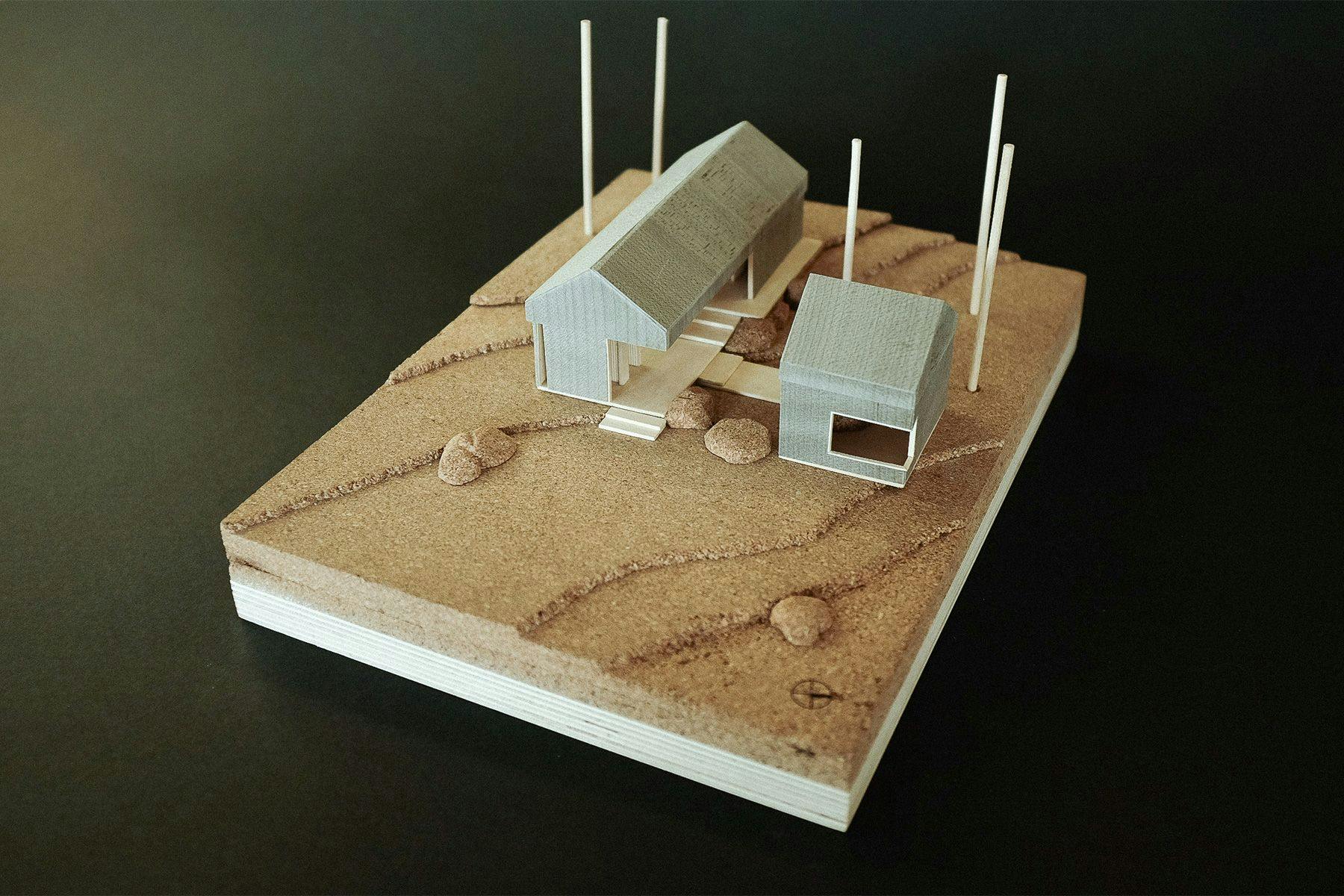
Zeroing in on your surf ranch model… You explain that “[t]he overall program laid out for my site will be divided between Dry and Wet experiences, but acknowledging this division, I hope to explore where these two experiences may overlap, stay rigidly divided, or dive into a unique spatial experience.” Could you please talk us through what that would mean in practice, perhaps giving an example or two?
To echo a previous question, I feel that the wet and dry experiences, parallel very similarly to the hot and cold ones. I ended up creating an informal Venn diagram of where these experiences all begin to overlap. I think that potentially the best example might be in the studio where I intentionally had all the vertical circulation (stairs) outside. I separated the sleeping from the office/studio as well as from the living and kitchen. By creating an outdoor circulation plan, the individual had to experience the natural elements to move throughout their daily routine. I loved the idea of running through a downpour to get to your work day, or the fact that right before bed, you have a moment where you get a few breaths of fresh air. I thought about how these moments could help benefit your mental state. You can imagine how invigorated you might be when you race up the stairs, trying to stay dry, or how a warm summer breeze drifting through the night might spur memories. These moments are not the obvious wet and dry of surfing or bathing, but they are the ones that were intentionally designed to happen organically.
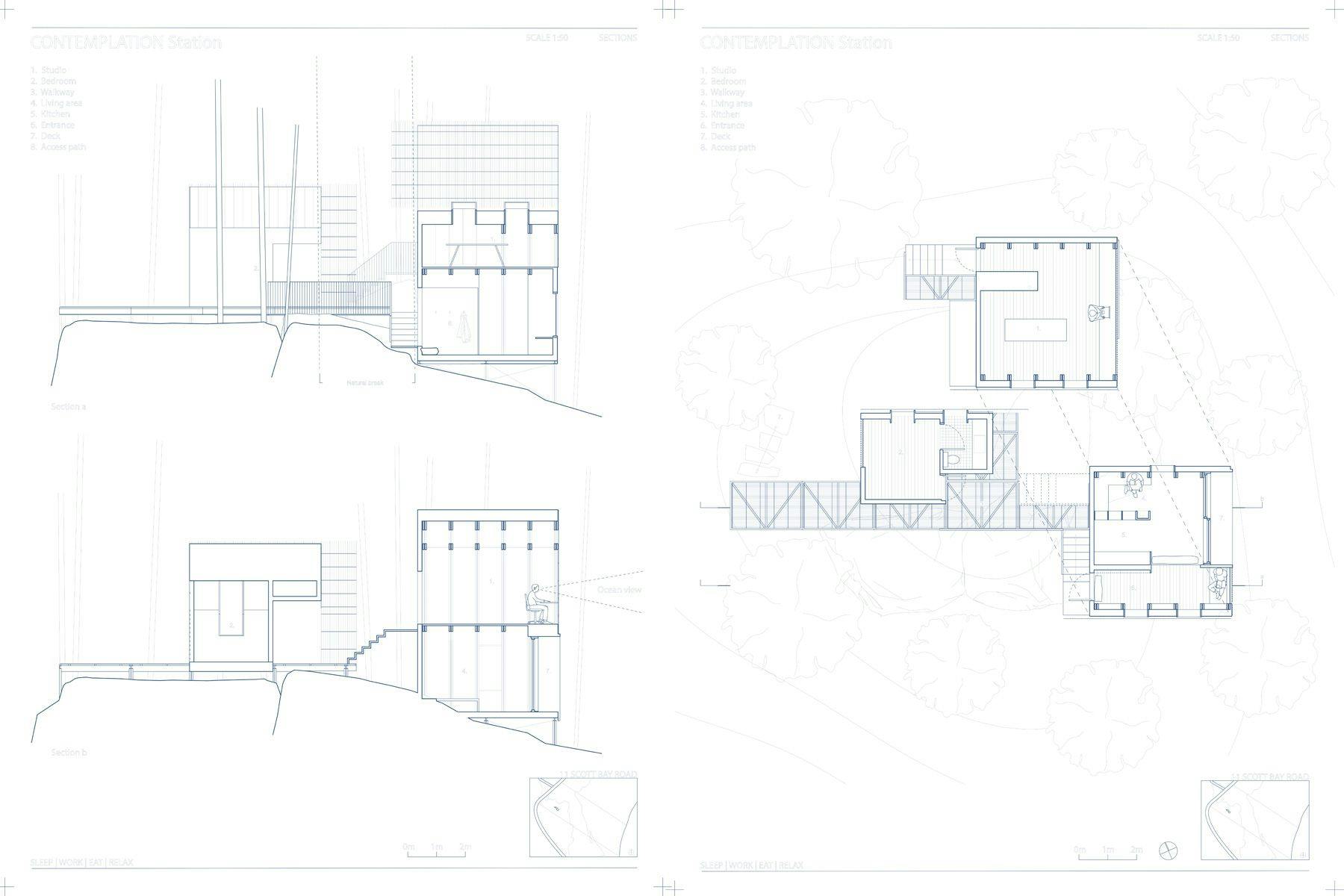
What are your favourite elements/spaces and how do you expect them to influence the surfing experience?
If I were to have to pick a favourite element of the surf ranch model, I think the one that stands out the most is the cold plunge baths in the hydrotherapy area. I enjoy the way that it touches down on the bedrock, allowing the guest to actually rest on the earth while submerged. It helps ground the building and the person to a specific location. It’s playful and fun to think about surfers, who moments ago were shivering in the Atlantic becoming so hot in the sauna that a cold plunge now is seen as a form of reprieve. This play of hot and cold temperatures is woven throughout the project, and references the culture of cold water surfing, so to have architectural moments that embrace that concept feels like it feeds back into the overall narrative of the surf ranch and its role in surf culture.
What were some of the biggest challenges when designing and how would these affect the potential building process?
When designing for a subculture, I feel it’s so important to be respectful as well as exploratory. I found it a challenge to explain or justify certain design decisions when consulting non-surfing individuals, however. It ended up making the project stronger I believe, because I found myself needing to allow the architectural form to speak for itself whether it was for a surfer or not. Spaces which any surfer would understand as important, (i.e. board storage or wetsuit drying room) were lost on the audience who didn’t understand the sport. This disconnect made me challenge how those seemingly utilitarian spaces might also become informed architecturally.
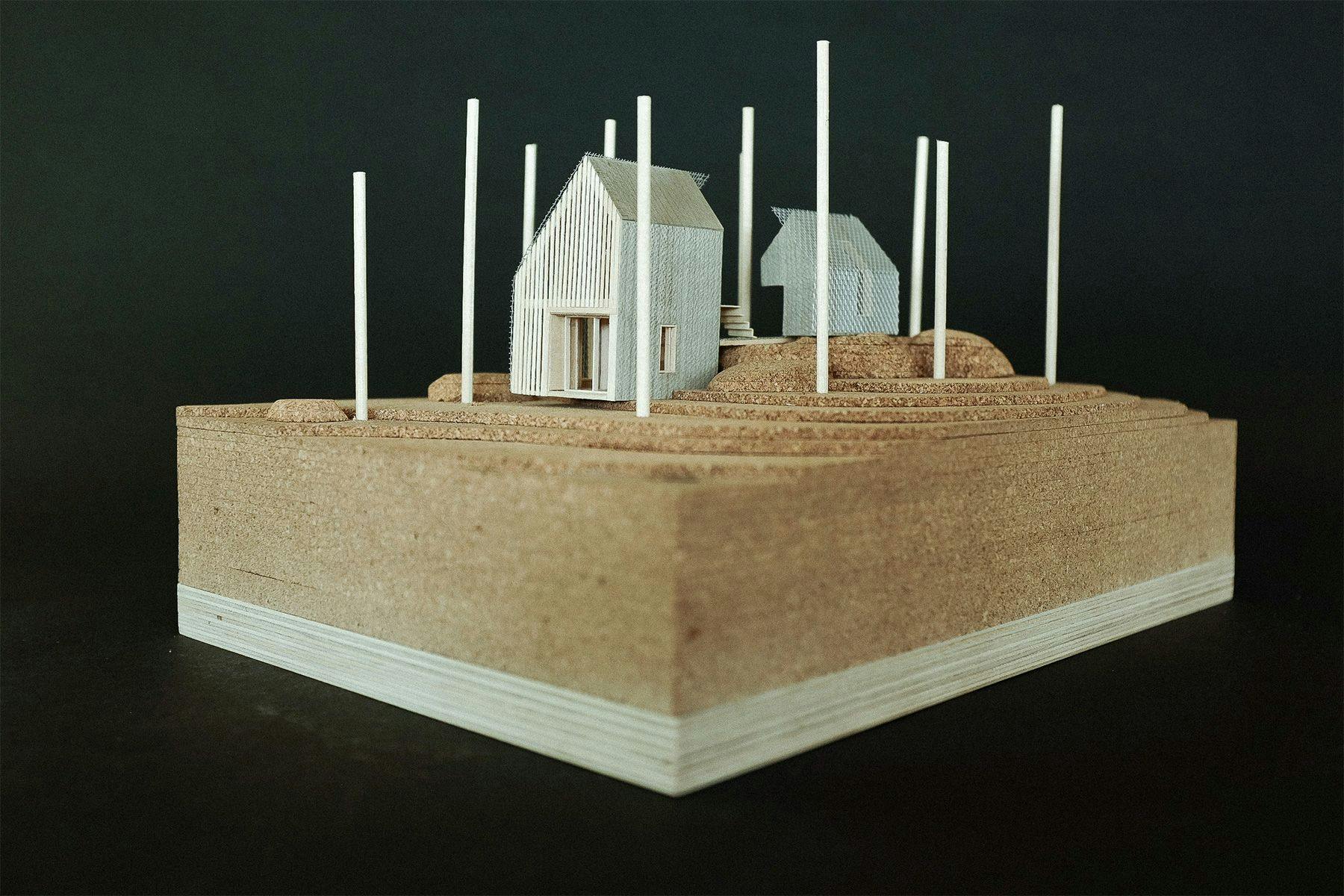
How has this project changed you both as a surfer and as a designer?
I believe this project allowed me to accept that surfing and its benefits are an important topic to be explored and designed around. The papers I researched helped solidify the ideas swirling in my brain, grounding it in hard science that this is an important and worthwhile area to continue to explore. It made me appreciate small designs, and designing with intention. It is very easy to throw stuff at the wall and see what sticks, but to sit in a culture, to know what those subtle moments are and then to try and design around them, that's both challenging and rewarding. I thank surfing for making me balance my priorities and I thank architecture for being a conduit for a form of creativity I find fascinating and frustrating at the same time. I think the world of design and surfing are so intertwined. This thesis helped me acknowledge that for me, they are inseparable. I would not be the designer I am if I didn't surf, and I would be a heck of a better surfer if I didn't spend as much time designing ;)
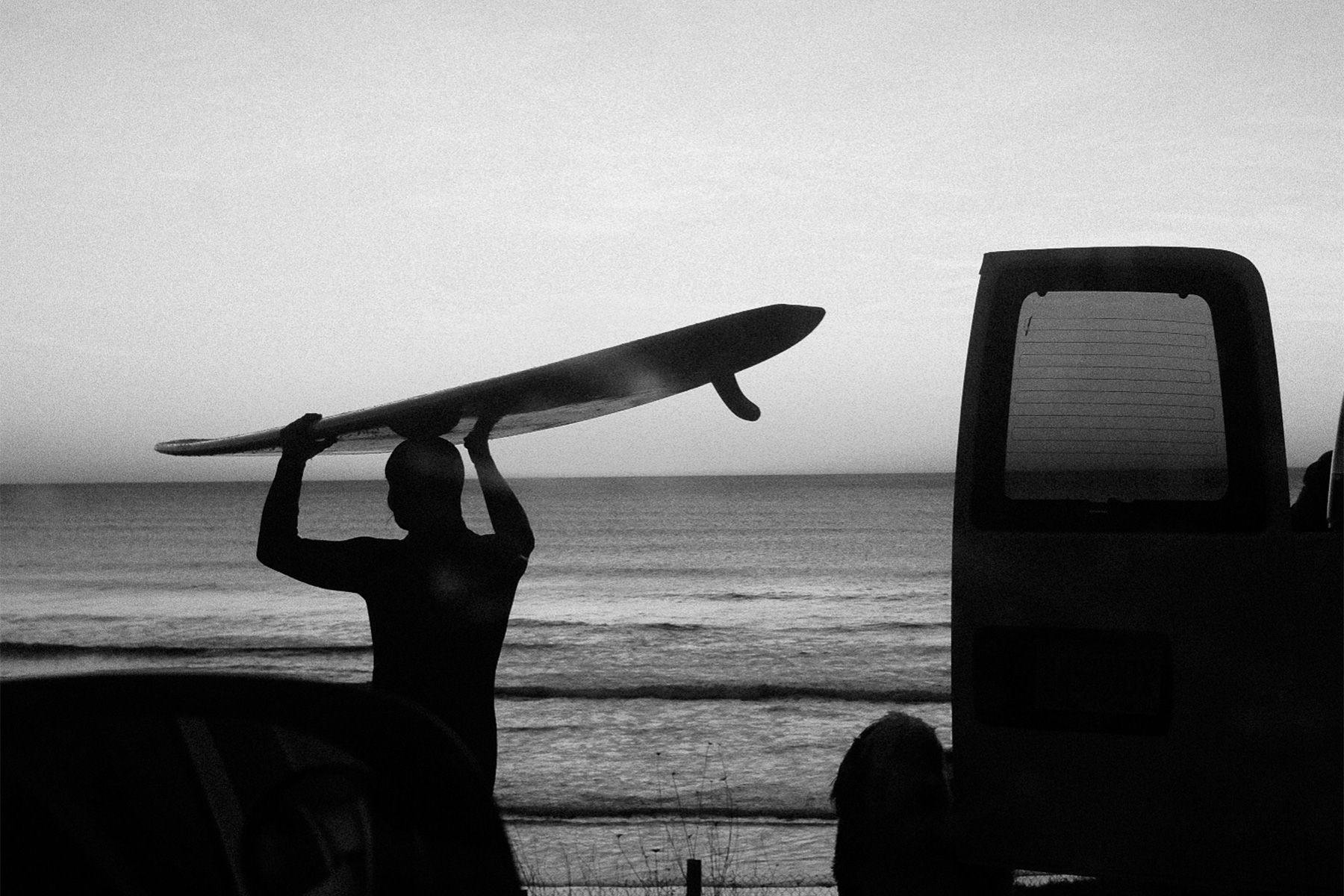
Finally, how do you expect/hope the ideas proposed by your thesis influence the future of surfing both as a subculture and an experience? How can surfing and surfers benefit from seeing themselves and their culture more architecturally?
I hope that the ideas proposed don't take away from the culture but rather enhance it. I hope that people worldwide, both in hot and cold environments, think about how small moments in a person's daily routine are so important and should be celebrated and designed around. I hope that the surfers building out vans and campers continue to problem-solve and design their dream rigs; after all, that's the purest form of architecture. I hope architecture never takes away from how simplistically beautiful it is to be out in the water and, on occasion, be able to surf a glorious tube of energy, that to me doesn't need to be re-designed.